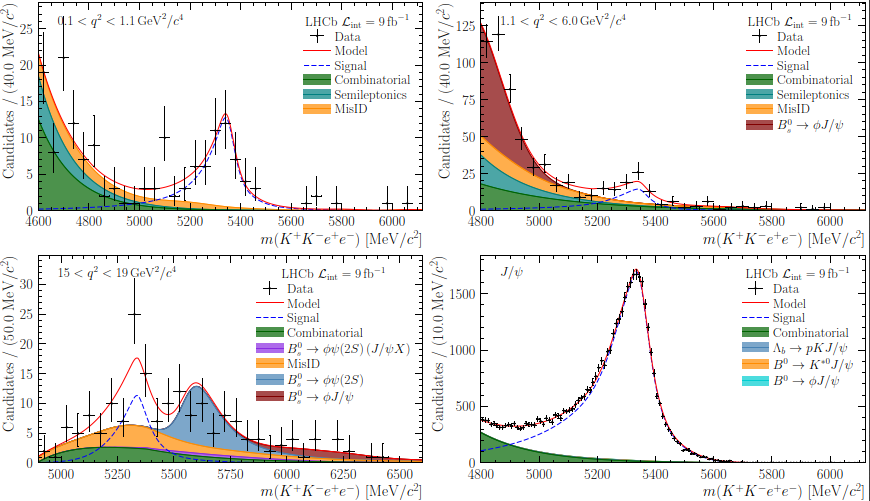The LHCb collaboration submitted today a paper reporting new tests of lepton flavour universality, one of the cornerstone of the Standard Model (SM) of particle physics. It implies that the SM treats the three charged leptons (electrons, muons and taus) identically, except for differences due to their masses. The results were also presented at the recent CERN seminar.
The decays used in this analysis are extremely rare. They involve the transformation of a beauty quark into a strange quark and two leptons (b→sℓ+ℓ−), a process that is highly suppressed in the SM and can be affected by the existence of new particles. The images above show an example of the SM Feynman graph as well as the one for the possible new physics (NP) contributions. Hypothetical new particles, such as that in the graph, could have masses too large to be produced directly at the Large Hadron Collider, but could still have a measurable effect on the decay rates being studied.
Lepton flavour universality is tested by comparing the ratios of the decay rates into different leptons. A significant deviation of these ratios from the theoretical predictions would indicate the existence of NP.
Lepton flavour universality is tested here for the first time using Bs0 decays. The Bs0 → ϕe+e− decay, in particular, was never observed before. Branching fraction ratios between the Bs0 → ϕe+e− and Bs0 → ϕμ+μ− decays are measured in three regions of dilepton mass squared, q2, with 0.1 < q2 < 1.1, 1.1 < q2 < 6.0, and 15 < q2 < 19 GeV2/c4 as shown in the image on the left. This is the first dedicated lepton universality test in the high q2 region. The results agree with the SM expectation.

The image above shows the mass distributions of selected Bs0 → ϕe+e− events for the three q2 regions as well as for Bs0 → ϕJ/ψ(→e+e−) decays used as a cross-checks.
The branching fraction of the Bs0 → ϕμ+μ− decay has been measured previously by the CDF and LHCb collaborations as a function of the dilepton mass squared. The experimental measurements from LHCb were systematically below theoretical predictions, with a local tension as large as 3.6 standard deviations. Discrepancies with SM predictions have also been found in the angular distributions of the Bs0 → ϕμ+μ− decay, as well as in the rates and angular distributions of other decays mediated by b→sμ+μ− transitions. This pattern of tensions with SM predictions has led to significant discussions within the community.
Further details and the numerical results can be found in the seminar presentation and in the publication.



